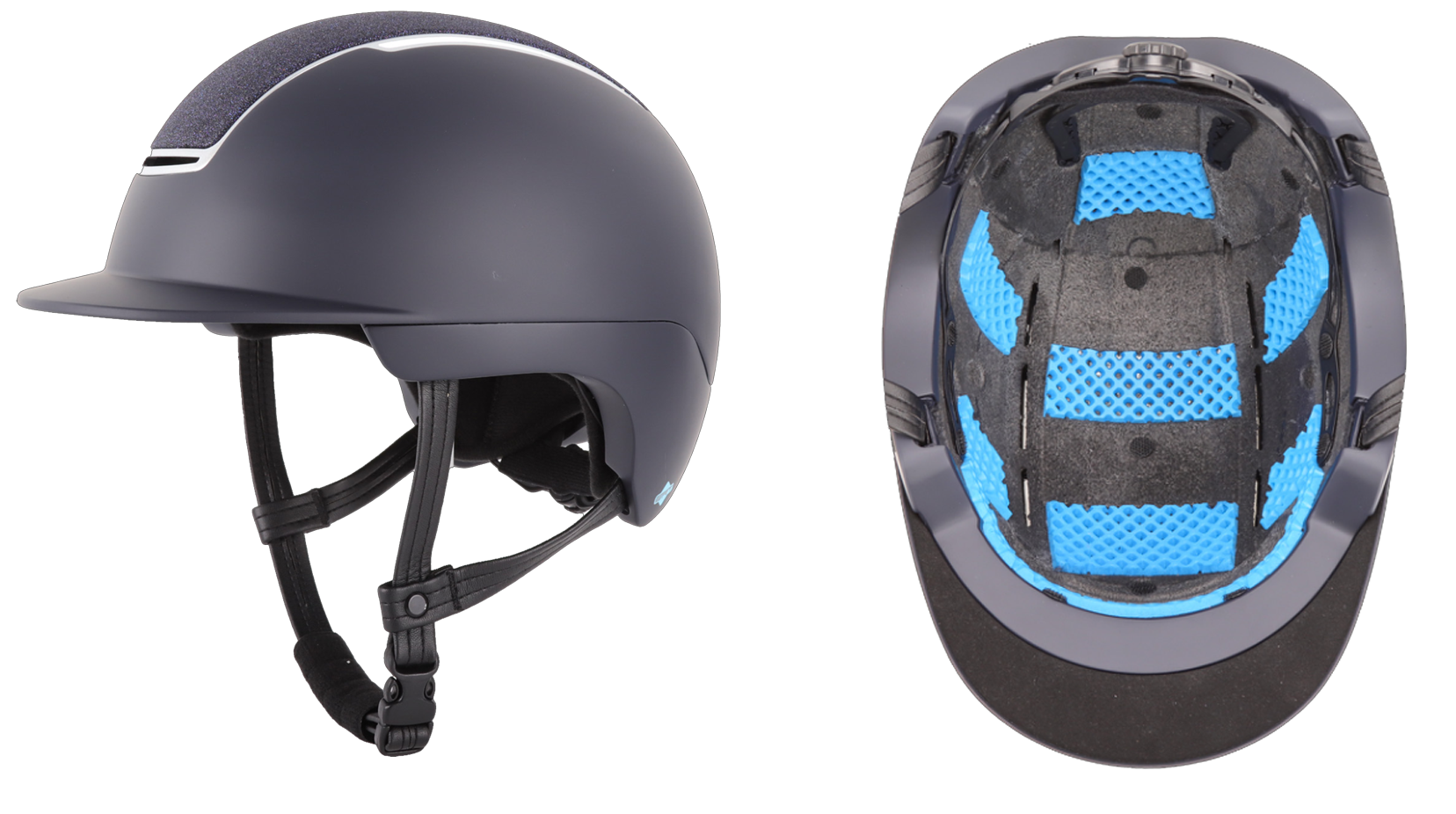Most Equestrian Helmets Are Too Hard. Strategic’s ERT™ Solves That.
Traditional equestrian helmets are built to meet certification tests—and that’s important. But there’s a tradeoff: to withstand the extreme impacts required for lab approval, most helmets rely on dense versions of EPS foam. This works in catastrophic crashes, but feels overly rigid in the more common, moderate impacts—like a rider falling sideways during a jump, slipping at low speed, or being unseated on uneven terrain.
That’s where ERT™ (Energy Reduction Technology) comes in.
ERT is Strategic Sports’ proprietary low-density layer, engineered to do what EPS alone cannot. It begins absorbing energy the moment an impact occurs—well before traditional foam starts to compress. The result? Better energy management in the real-world crashes riders are most likely to face.
What the Data Tells Us
Equestrian helmet standards allow from 250 to 300 g’s (depending on the market and specific certification) of linear acceleration to the brain—modeling severe, high-speed impacts. Passing these tests requires stiff, dense foam. But real-world falls often involve lower speeds, rotational forces, or oblique impacts—exactly where traditional EPS performs less effectively.
Research from Imperial College London and Virginia Tech’s helmet lab shows many riding accidents fall into this lower-energy range. Yet many helmets remain too rigid to absorb these forces. The solution isn’t eliminating EPS—it’s pairing it with a low-density layer that expands protection across a wider range of impact energies.
The Challenge of Meeting Evolving Standards
With ASTM recently lowering the allowable peak acceleration in equestrian helmet testing from 300g to 275g, brands face increased pressure to deliver better energy management without compromising fit or comfort. ERT™ helps bridge that gap—absorbing impact energy earlier and more effectively, making it easier to meet tougher standards while still addressing the real-world crashes riders are most likely to experience.
Why a Low-Density Layer Matters
EPS is excellent in high-energy situations—but it takes significant force to activate. ERT™, in contrast, begins working at lower thresholds. This is critical for equestrian riders, where common incidents include:
Falls from standing height or low jumps
Unseating at trot or canter speeds
Side impacts against fences, ground, or other obstacles
By combining EPS with ERT, Strategic Sports delivers dual-density protection that helps reduce both concussive and sub-concussive forces—without compromising protection in severe impacts…because Softer is Smarter.
More Than Rotation
Equestrian falls are often more linear than those seen in other sports—direct impacts to the ground, fences, or obstacles from higher riding positions. Many competing energy management systems focus almost exclusively on rotational forces, adding little to no benefit for linear impacts. ERT™ is different: it manages both linear and rotational energy in one integrated layer, giving riders broader protection against the real-world crash profiles unique to horseback riding.
Designed for Soft Footing
Equestrian arenas often use sand, fiber, or other soft ring footing that can reduce how much a helmet’s dense EPS liner compresses on impact—limiting its ability to absorb energy effectively. ERT™ solves this problem. Its low-density structure activates instantly, even when the ground itself absorbs part of the force, ensuring riders still get meaningful protection in conditions where traditional EPS alone may underperform.
How ERT™ Works
ERT is a soft, flexible polymer molded into a grid-like structure and placed between the head and the EPS shell. It compresses in multiple directions, absorbing both direct impacts and rotational energy.
Key Benefits of ERT™:
Activates instantly at low g-force levels for earlier energy absorption
Mitigates angular acceleration without added mechanical slip layers
Seamlessly integrates into existing equestrian helmet designs
Proven to enhance real-world crash performance across varied scenarios
Independent and internal tests confirm that ERT-equipped helmets perform as well as—or better than—helmets using competitive rotational management systems, without the extra complexity, weight, or bulk.
A Five Star Difference
Strategic engineers have repeatedly taken helmet designs with average test scores and elevated them to Virginia Tech’s 5 Star rating—simply by adding ERT. Placement is optimized using real-world equestrian impact data, improving both safety and rider comfort. Unlike other systems, ERT doesn’t impede ventilation or add bulk; the soft blue pads even enhance fit and comfort.
Proven. Scalable. Found in Leading Equestrian Brands.
Strategic Sports pioneered low-density layers in helmets over a decade ago. Today, ERT™ is trusted by leading brands in equestrian, cycling, snow, and motorsports. Whether you’re refreshing an existing model or creating a next-generation helmet, ERT offers a proven path to safer, smarter protection—without complicating design or manufacturing.
We’re ready to help your brand deliver helmets that go beyond certification—meeting the expectations of riders who demand the very best.




